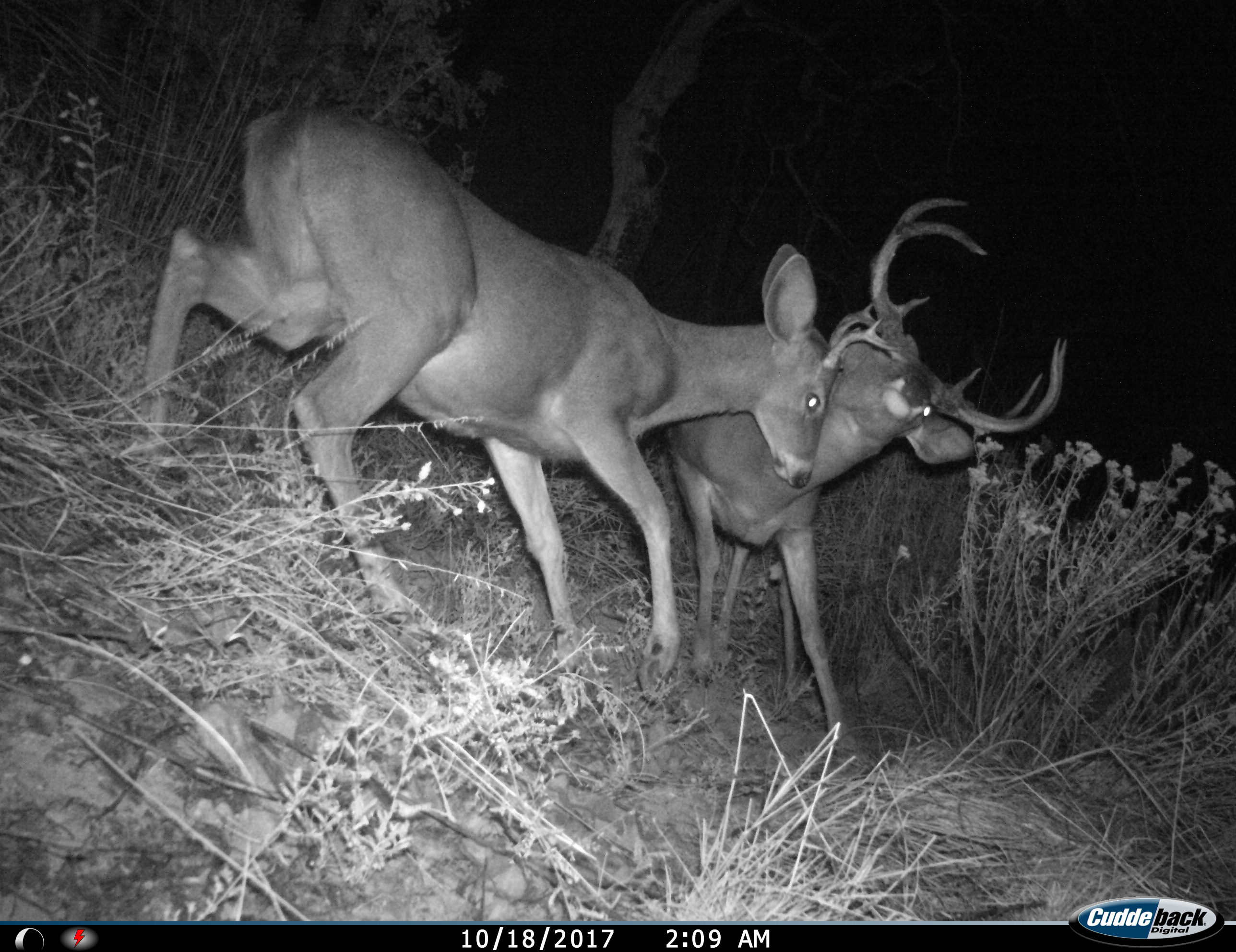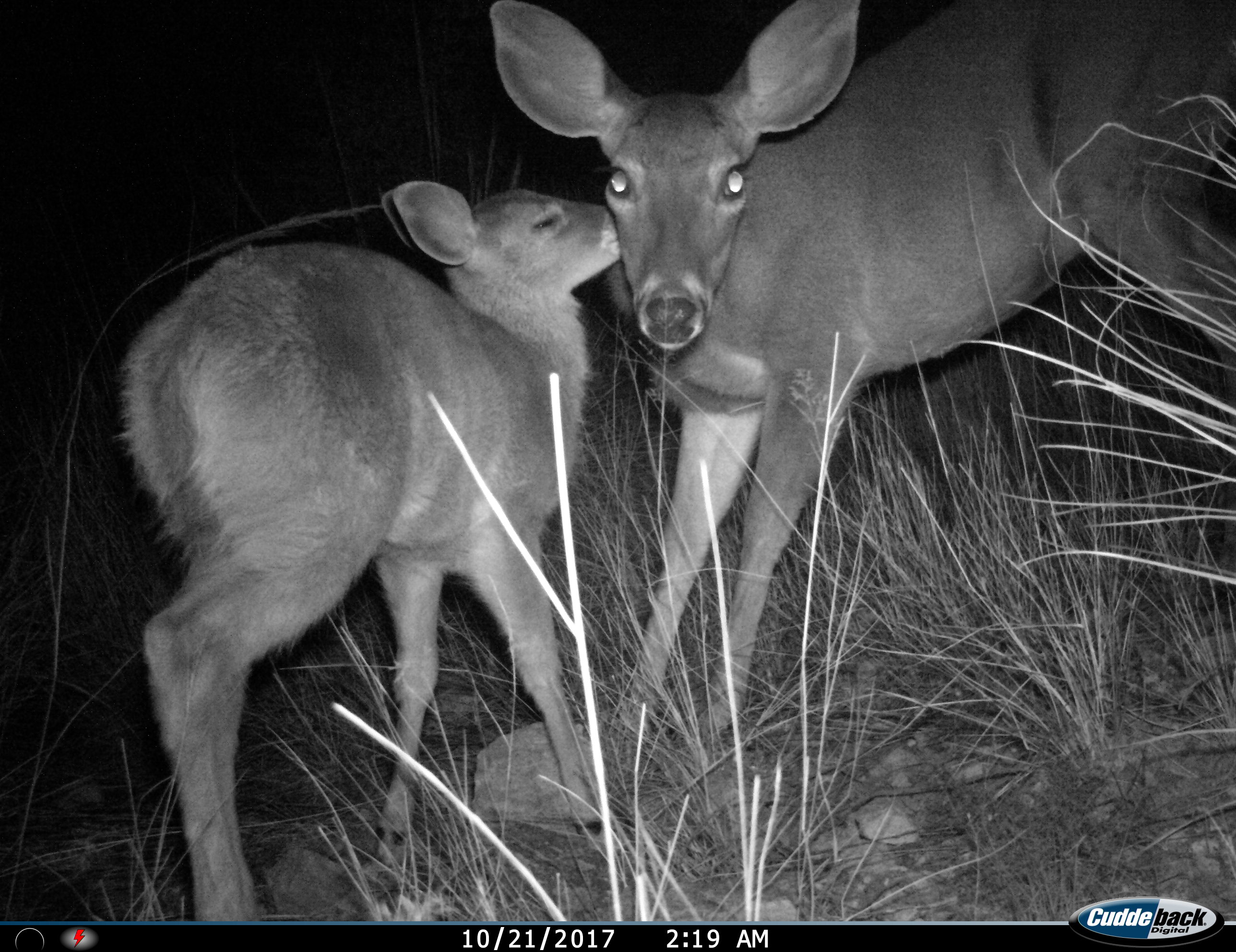Sonoran Desert Network Project
Long monitoring of medium and large mammals in 11 national parks in the American Southwest. Cameras are deployed to permanent locations annually in each park to assess species occurrence and estimate occupancy and species richness. Citizen scientists assist in camera deployment, image analysis, and data interpretation in this National Park Service effort.
Small Park Goals and Design: (1) determine the occurrence and detect changes in the within-park distributions of key medium and large terrestrial mammal species; (2) detect changes in estimated species richness over time. Design: Permanent camera locations (ranging from 6-18 sites) are monitored with remote wildlife cameras for one month (fixed period) per year. Small Parks: Casa Grande Ruins NM, Coronado NMEM, Fort Bowie NHS, Gila Cliff Dwellings NM, Montezuma Castle NM, Tonto NM, Tumacacori NHP, and Tuzigoot NM.
Large Park Goals and Design: (1) determine the occurrence and detect changes in the within-park distributions of key medium and large terrestrial mammal species; (2) detect changes in estimated species richness over time; (3) detect estimated changes in mammal occupancy for selected species. Design: Design: Permanent camera locations (ranging from 42-60 sites) are monitored with remote wildlife cameras for one month (fixed period) per year. Cameras are >1km spacing. Large Parks: Chiricahua NM, Organ Pipe Cactus NM, and Saguaro NP.
Project Caveats: Sensitive species locations will be embargoed. Large parks (Chiricahua NM, Organ Pipe Cactus NM, Saguaro NP) use a robust design with up to 60 camera locations; small parks have more limited camera distributions.
Small Park Goals and Design: (1) determine the occurrence and detect changes in the within-park distributions of key medium and large terrestrial mammal species; (2) detect changes in estimated species richness over time. Design: Permanent camera locations (ranging from 6-18 sites) are monitored with remote wildlife cameras for one month (fixed period) per year. Small Parks: Casa Grande Ruins NM, Coronado NMEM, Fort Bowie NHS, Gila Cliff Dwellings NM, Montezuma Castle NM, Tonto NM, Tumacacori NHP, and Tuzigoot NM.
Large Park Goals and Design: (1) determine the occurrence and detect changes in the within-park distributions of key medium and large terrestrial mammal species; (2) detect changes in estimated species richness over time; (3) detect estimated changes in mammal occupancy for selected species. Design: Design: Permanent camera locations (ranging from 42-60 sites) are monitored with remote wildlife cameras for one month (fixed period) per year. Cameras are >1km spacing. Large Parks: Chiricahua NM, Organ Pipe Cactus NM, and Saguaro NP.
Project Caveats: Sensitive species locations will be embargoed. Large parks (Chiricahua NM, Organ Pipe Cactus NM, Saguaro NP) use a robust design with up to 60 camera locations; small parks have more limited camera distributions.



